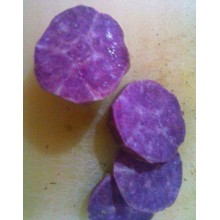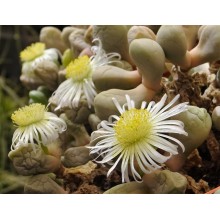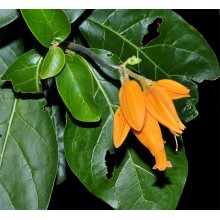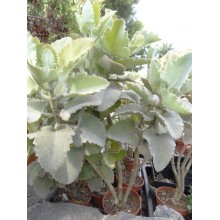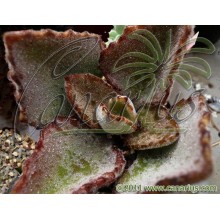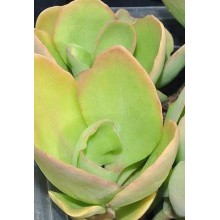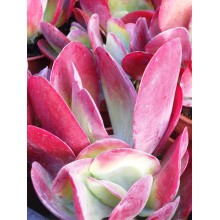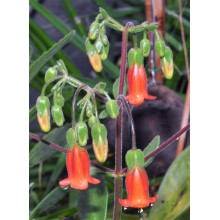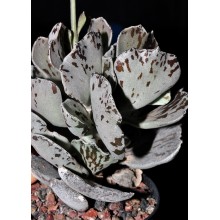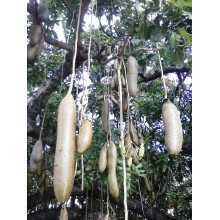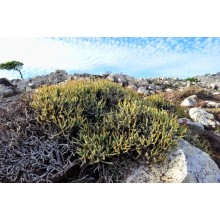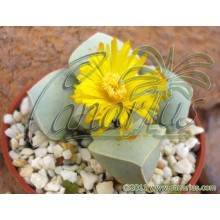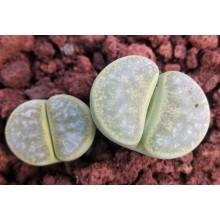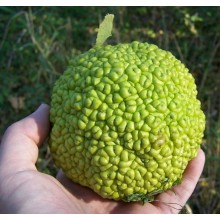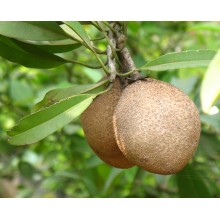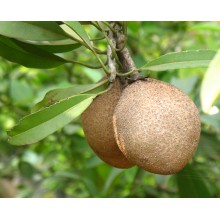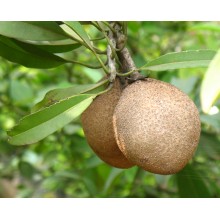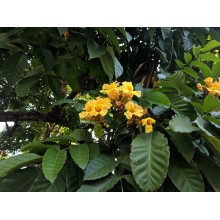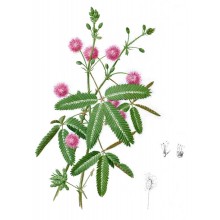Unusual Plants There are 166 products.

This is our selection of extraordinary plants. They are all very different and somehow unusual. There are air plants, red bananas, living stones, plants with black leaves, zig-zag cacti and all types of eye-catching plants and conversation pieces.
-
Ipomoea batatas 'Okinawa' - Okinawan Purple Sweet Potato
Ipomoea batatas 'Okinawa' - Okinawan Purple Sweet Potato
Okinawan Sweet Potatoes are known to be the reason why the old natives of Okinawa used to live for so long. TThe high concentration of purple Xanthocyans in this tuber have life-lengthening properties. This cultivar is quite popular in SE Asia to Hawaii. It forms clumps (n,ot much running) and takes about 5-6 months to be gathered.
18,50 € -
Jensenobotrya lossowiana
Jensenobotrya lossowiana
Jensenobotrya lossowiana is one of the most exciting plants on Earth because it is restricted to one small location on the skeleton coast of Namibia, which is one of the most extraterrestrial place on our planet! It is found on small cliffs, virtually rainless, surrounded by neverending sand dunes in most directions.
13,20 € -
Juanulloa aurantiaca
Juanulloa aurantiaca
Evergreen shrub native to Central America with exotic orange flowers.
32,50 € -
Kalanchoe beharensis cv. Fang.
Kalanchoe beharensis cv. Fang.
Felty, thick triangular leaves with lots of bumps and grooves. It is a compact, smaller form of a fabulous Kalanchoe from Southern Madagascar.
10,40 € -
Kalanchoe deficiens var. glabra
Kalanchoe deficiens var. glabra
Short clumping shrub from mid to high elevations in Yemen. Pale green to grey obovate leaves and nice red inflorescences, held on tall stalks. It makes a nice garden subject for the xeric garden.
14,30 € -
Kalanchoe luciae
Kalanchoe luciae
One of the most colourful in the Crassulaceae family. This plant develops incredible colours on the bold rounded leaves when exposed to cool temperatures or grown in full sun: red to purple, pink or orange and then the white-bluish green background.
14,30 € -
Kalanchoe rebmannii
Kalanchoe rebmannii
Small Kalanchoe with rounded dark green leaves and red flowers. Native to one area in the central highlands in Madagascar, where it is found in humus patches on humid granite cliffs.
13,30 € -
Kalanchoe rhombopilosa
Kalanchoe rhombopilosa
Dainty small Kalanchoe with shiny grey-white leaves specked in bright brown. Of course leaves are "rhomb" shaped. It typically branches from the bases and grows to 20-30 cm in height. It is is endemic to southwest Itampolo, in Madagascar.
13,30 € -
Kigelia africana - Sausage Tree
Kigelia africana - Sausage Tree
Large >2 years old plant - This African tree, produces distinctive gigantic fruits, shaped like sausages. It is easy to cultivate in pots, as long as it is kept above 4 C. Leaves are dark green, glossy and pinnate. The tree in fruit is a people-stopper.
42,00 € -
Kleinia scottii
Kleinia scottii
This is the only succulent memeber of the Asteraceae family found on the island of Socotra. It is a low growing, dome-shaped, densely branched shrub. It blooms with clusters of white flowers.
21,30 € -
Lapidaria margaretae
Lapidaria margaretae
Cont.= 6 cm. Beautiful living-stone plant from Namibia. Lapidaria is a classic of plant mimicry to rocks. Give filtered sun or light shade and water sparingly. It will take 25° F (-4 ° C) for short periods
10,70 € -
Lithops lesliei f. albinica C036A
Lithops lesliei f. albinica C036A
Lithops lesliei is a rather easy to grow living stone which is hypervariable as it occurs in a very wide area of South Africa. This form, albinica, is especially attractive because the whole plant turns golden yellow or bright green depending on the season.
10,30 € -
Maclura pomifera
Maclura pomifera
"Osage orange" is a deciduous tree from North America, producing unusual, large green fruits. These are unedible yet very exotic-looking and ornamental and resemble the fruits of the breadfruit tree.
23,40 € -
Manilkara zapota 'Alana'- Sapodilla
Manilkara zapota 'Alana'- Sapodilla
Interesting evergreen fruit tree native from Central America.Now in cultivation in many tropical and subtropical countries of Asia.
79,90 € -
Manilkara zapota 'Excalibur'- Sapodilla
Manilkara zapota 'Excalibur'- Sapodilla
Interesting evergreen fruit tree native from Central America.Now in cultivation in many tropical and subtropical countries of Asia.
79,90 € -
Manilkara zapota 'Gigante'- Sapodilla
Manilkara zapota 'Gigante'- Sapodilla
Interesting evergreen fruit tree native from Central America.Now in cultivation in many tropical and subtropical countries of Asia.
79,90 € -
Markhamia lutea
Markhamia lutea
Spectacular flowering shrub to small tree, native to Africa. It produces long-lasting inflorescences of the brightest yellow.
48,50 € -
Mimosa pudica - Sensitive Plant
Mimosa pudica - Sensitive Plant
This species rocks! It is a creeping plant, with sensitive leaves that respond to touch, heat or wind. When you touch the leaves they quickly close for a few minutes. It is from tropical America and it loves a lot of sun and heat.
17,20 € -
Monstera adansonii 'Double Window'
Monstera adansonii 'Double Window'
Selected clone with larger leaves and more fenestrations than usual, originally spread at auctions at Fairchild Tropical Garden in Miami. It is larger than a typical adansonii and more "skeletal", with more holes when it matures, and so it looks similar to a Monstera obliqua.
36,00 €
At the moment there are few products in this category Unusual Plants
















